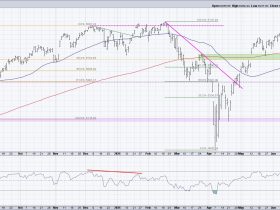Recently, Silicon Valley Bank (SVB), a bank that was heavily involved in cryptocurrency, collapsed. Naturally, Democrats want to exploit the situation to rush through new regulations. But that will only make the problem worse.
The failure of Silicon Valley Bank, a forty-year old, $200 billion bank, has caused many to worry about the country’s economic stability. Among the concerned is Senator Elizabeth Warren, who wants to reinstate some of the defunct banking regulations from the Dodd-Frank Act of 2010.
But the failure of SVB would not have been prevented by more government intervention. On the contrary, the government itself—by driving up inflation and making it difficult to hedge against interest rate risk—is partially responsible for the collapse of this bank. Passing new regulations might give us a semblance of comfort, but all it would do is create the conditions for more bank failures in the future.
In a New York Times op-ed published days after the announcement that regulators were taking control of SVB, Senator Warren claimed that she knew exactly why the bank failed: it was allowed to take on too much risk. She argues that the level of risk taken on by SVB was only permitted after sections of Dodd-Frank were repealed by the Trump administration in 2018. This claim has also been repeated by President Joe Biden and other top Democrats.
Warren is correct when she asserts that SVB had a risky business model. As she writes in her op-ed, “The bank relied on a concentrated group of tech companies with big deposits, driving an abnormally large ratio of uninsured deposits. This meant that weakness in a single sector of the economy could threaten the bank’s stability.” SVB was also heavily invested in long-term bonds, which made it difficult for it to get more liquidity when depositors began pulling out their funds.
But where the senator goes astray is her contention that the original liquidity and capital requirements under Dodd-Frank would have prevented SVB from going under. As researchers at the Cato Institute point out, SVB “was extremely well capitalized, with ratios roughly twice as high as the requirements.” In other words, SVB had more than enough funds to cover its liabilities—barring an unexpected bank run. An analysis by the Bank Policy Institute found that SVB almost certainly would have passed the Dodd-Frank minimum liquidity coverage ratio, meaning the bank would have been found to be sufficiently prepared to meet short-term obligations.
So why did SVB fail? While SVB executives of course deserve most of the blame, the federal government is also at fault. Through a combination of huge spending increases, government lockdowns, and ultra-low interest rates in 2020 and 2021, inflation increased to a forty-year high. This necessitated a complete about-face in Federal Reserve policy. Interest rates were increased quickly to tamp down inflation.
Of course, SVB executives should have hedged against the possibility of rising interest rates. But it should come as no surprise that some financial institutions put themselves in precarious situations when the Federal Reserve pursued an erratic monetary policy, making long-term financial planning more difficult for private banks. Not to mention that throughout 2021 “experts” declared inflation was “transitory,” indicating there was little need for the Fed to raise rates. Senator Warren herself repeatedly downplayed the inflation problem. Yet in her op-ed, she blames SVB for failing to prepare for interest rate hikes.
Nonetheless, Democrats like Elizabeth Warren want to have their cake and eat it too. They want the government to be able to spend wildly and keep interest rates low while hamstringing banks with onerous regulations to try to avoid the natural consequences of their bad policies. Rather than demonstrate the need for more regulation, the collapse of SVB proves that the government not only can’t prevent bank failures but often creates the conditions under which banks are more likely to fail.





